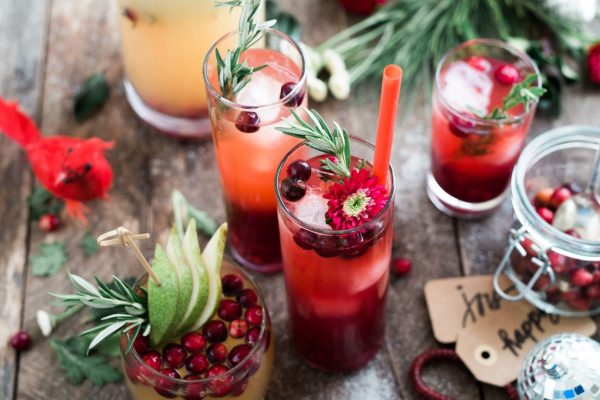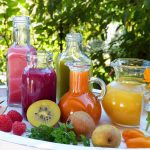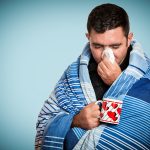The holiday season is nearly here, and between Thanksgiving and the New Year, you’ll attend any number of gatherings. Chances are good that alcohol will be flowing pretty freely at these events. So even if you don’t normally indulge, you’ll probably find yourself with a drink in your hand on more than one occasion.
The truth is, more people overindulge during the winter holidays than at any other time of year. And it’s surprisingly easy to find yourself a little “too tipsy” before you realize it.
That’s because, depending on your weight and liver size and health, your body can only metabolize so much alcohol each hour. But when it catches up with you, it can hit like a sledgehammer.
The next morning is even worse. The pounding head, sensitivity to light, upset stomach and other lingering effects make you wish you’d avoided the festivities altogether.
Well, there’s no need for that. The holidays are truly a time to celebrate. So let’s talk about some safe alcohol practices that that will keep you safe and hangover-free during this festive time of year.
🍷 Is There Such a Thing as “Healthy” Liquor?
My patients often ask me which type of alcohol is the “healthiest.” And they always feel disappointed with my answer.
There is no truly healthy alcohol. However, some types of alcohol may be less harmful than others.
Wine is widely recognized for its heart-healthy benefits. This is attributed to a potent antioxidant called resveratrol that is found in red wine. In addition to safeguarding your heart, this super-nutrient protects your mitochondria, reduces inflammation and boosts metabolism.
Unfortunately, it would take multiple bottles of wine to equal a single capsule of resveratrol. So you really can’t expect to get the same health benefits from drinking wine.
Darker alcohols like brandy, bourbon, whiskey and even beer contain high concentrations of something called congeners. These are toxic byproducts (methanol, histamines, acetone, etc.) produced during the fermentation process. When you drink liquor with a high congener content, you’re likely to experience more severe hangover symptoms.
Clear spirits such as gin, rum and vodka are likely a healthier alternative than those that are dark, because they have a lower congener content. But that doesn’t mean you can’t get a hangover if you drink too much of them. It will probably just be less brutal.
Mixers matter. Sugary mixers, juices, sodas, and pre-made cocktail blends can be worse than the alcohol itself. They’re packed with sugar, dyes, and artificial flavorings — and because they mask the alcohol taste, it’s easy to drink too fast and too much. (If it tastes like fruit punch, you’ll probably gulp it down like fruit punch!)
Your best bet?
When consumed in moderation, red wine is a relatively safe choice. Light beers can also be pretty harmless since they have such a low alcohol content. However, wine and beer are both acquired tastes. Not everyone likes them.
If that’s the case, stick with a clear alcohol. But don’t do shots. And don’t blend them with sugary mixes. Instead, mix a shot with a tall glass of sparkling water. Then add a slice of lime, orange, kiwi or watermelon for flavor.
🥛3 Tips to Avoid getting Drunk During the Holidays
In addition to choosing a drink that’s not horribly bad for you, it’s very likely you don’t want to accidentally find yourself in a drunken state. Here are some measures you can take to avoid this.
Never drink on an empty stomach. Fill your stomach with healthy proteins, fats and plant-based carbohydrates prior to heading out to a holiday party. This helps to buffer the rapid effect of alcohol on your system.
Stay hydrated. Excess alcohol consumption dehydrates the body. This makes it a good idea to follow each alcoholic drink with at least 8 ounces of water. Sixteen ounces is even better. It will give you more time to metabolize the liquor you’ve already ingested and get it out of your system.
Pace yourself. Tasty beverages with cute holiday names like Rudolph’s Tipsy Spritzer and Santa Shot Cocktails are easy to slug down as quickly as a bottle of Gatorade. The difference? These seasonal drinks aren’t just loaded with sugar and artificial ingredients. They also have exceptionally high alcohol content. So sip them slowly, and remember this…
“Drink because you are happy, but never because you are miserable.” — G.K. Chesterton
SOURCES:
Alcohol Alert: Alcohol Metabolism. National Institute on Alcohol Abuse and Alcoholism. No. 35, PH 371.
Smoliga JM, Baur JA, Hausenblas HA. Resveratrol and health–a comprehensive review of human clinical trials. Mol Nutr Food Res. 2011 Aug;55(8):1129-41.
Weiskirchen S, Weiskirchen R. Resveratrol: How Much Wine Do You Have to Drink to Stay Healthy? Adv Nutr. 2016 Jul 15;7(4):706-18.
Verster JC, Stephens R, Penning R, Rohsenow D, McGeary J, Levy D, McKinney A, Finnigan F, et al. The Alcohol Hangover Research Group Consensus Statement on Best Practice in Alcohol Hangover Research. Curr Drug Abuse Rev. 2010 Jun; 3(2): 116–126.



